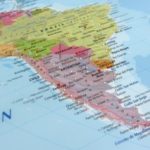We are on the verge of a revolutionary transformation able to power the last billion
Considering the lukewarm results coming out of COP 23 in Bonn, it may seem foolhardy to believe in a world where we all enjoy driverless electric cars and every school and health centre across Africa is powered by clean, affordable energy. The targets set on carbon emissions are looking fragile, while the US withdrawal from the Paris Agreement has dominated the headlines over the past six months.
But beyond the gloom, there is one palpable reason to be optimistic. We have reached a technological tipping point where solar power now has the capacity to turn the lights on round-the-clock for the last billion people on earth without reliable power.
This revolution is partly driven by the trickle-down effect of innovation happening in Silicon Valley and the car industry. As big brands have striven to develop longer-lasting and cleaner batteries to power our phones, tablets and electric cars, they have forced a huge leap forward in lithium battery technology. These advances are now being utilized outside those industries.
Last week in South Australia, construction was completed by Tesla on the world’s largest lithium-ion battery. It can store enough renewable energy to power an astonishing 30,000 homes. Yet to my mind the bigger story will be the impact this technology can have in Africa and Asia, where close to 1.1bn people still struggle to access power and must rely on expensive, inefficient and polluting electricity from diesel or petrol generators, with little prospect of connecting to the grid.
Solar energy combined with lithium battery storage makes possible the delivery of reliable, off-grid power at a residential or community level. Smart technology can accurately monitor consumption, which means off-grid solar systems can be installed and maintained cost-efficiently and cost-effectively, however remote the location. Houses, schools, health centers, even whole communities, can be powered off-grid, cheaply and without burning fossil fuels. We estimate that households in developing countries could immediately save up to 80 per cent in energy costs by switching to solar technology from diesel and petrol.
The challenge in making this solar revolution a reality is not a technological one. It is one of perception and of financing. Until now, a preoccupation with upfront capital expenditure and a failure to grasp the long-term return on investment from next-generation solar have hampered the scaling of solar power across low-income countries. But solar power is not as expensive and unreliable as it once was.
Yes, there are examples of expensive, failed solar projects across Africa. But that’s not the story now. The story now is that multiple, smaller, better-managed and monitored solar projects can be implemented to power communities. One thing that has changed is an understanding of how solar projects are costed. In the past, due to the perceived risk involved with solar, projects have been costed on the basis of upfront capital expenditure. But today, the reliability of solar power and the ability to project its long-term usage means that projects should be costed using the “levelized cost of electricity” (LCOE) model. This values the unit cost of generating energy through a given asset across that asset’s lifetime, not simply on what it costs to build it and plug it in on day one.
This is how most wind generation power projects are costed and it can be applied equally effectively to solar projects. Using this approach means that, for example, the real cost of off-grid solar power is now below 20 cents per kilowatt hour, compared with the 60 cents per kWh of energy generated from small diesel and petrol generators.
For just $2m, for example, every primary healthcare clinic in Sierra Leone could have 24-hour power. This is a huge, game-changing level of saving that stands to transform not only the individual lives of millions living off-grid, but the productivity of whole economies.
What must happen now is that donor agencies and investors take a longer view on solar and back its rollout.
The supply-side issues related to fossil fuels are driving the largest sustained push towards the commercialization and large-scale adoption of renewables, not least in solar power. In 2016, renewables accounted for 11.3 per cent of the world’s energy consumption, up 1 percentage point from the previous year. This increase took place in spite of a fall in investment in renewables in 2015. It was made possible by the dramatic fall in cost and a significant rise in efficiency of solar power.
The facts prove that solar provides value for money — now money must flow to allow it to be scaled. The entire world could be powered by harnessing solar energy from just 1 per cent of the sunshine that falls on the Sahara. Solar power delivered through the grid is already a reality in parts of Europe, the US and Australia. But for much of the developing world, grid power is not a reliable option. We now have the chance to give a billion people off-grid solar power, providing them with clean, affordable energy. This could be an incredible, transformative moment and a tangible, viable climate-change victory. The financial and development returns on investment are clear. Smart money — whether public or private — should back solar.
Fergus Drake is chief executive of Crown Agents.

